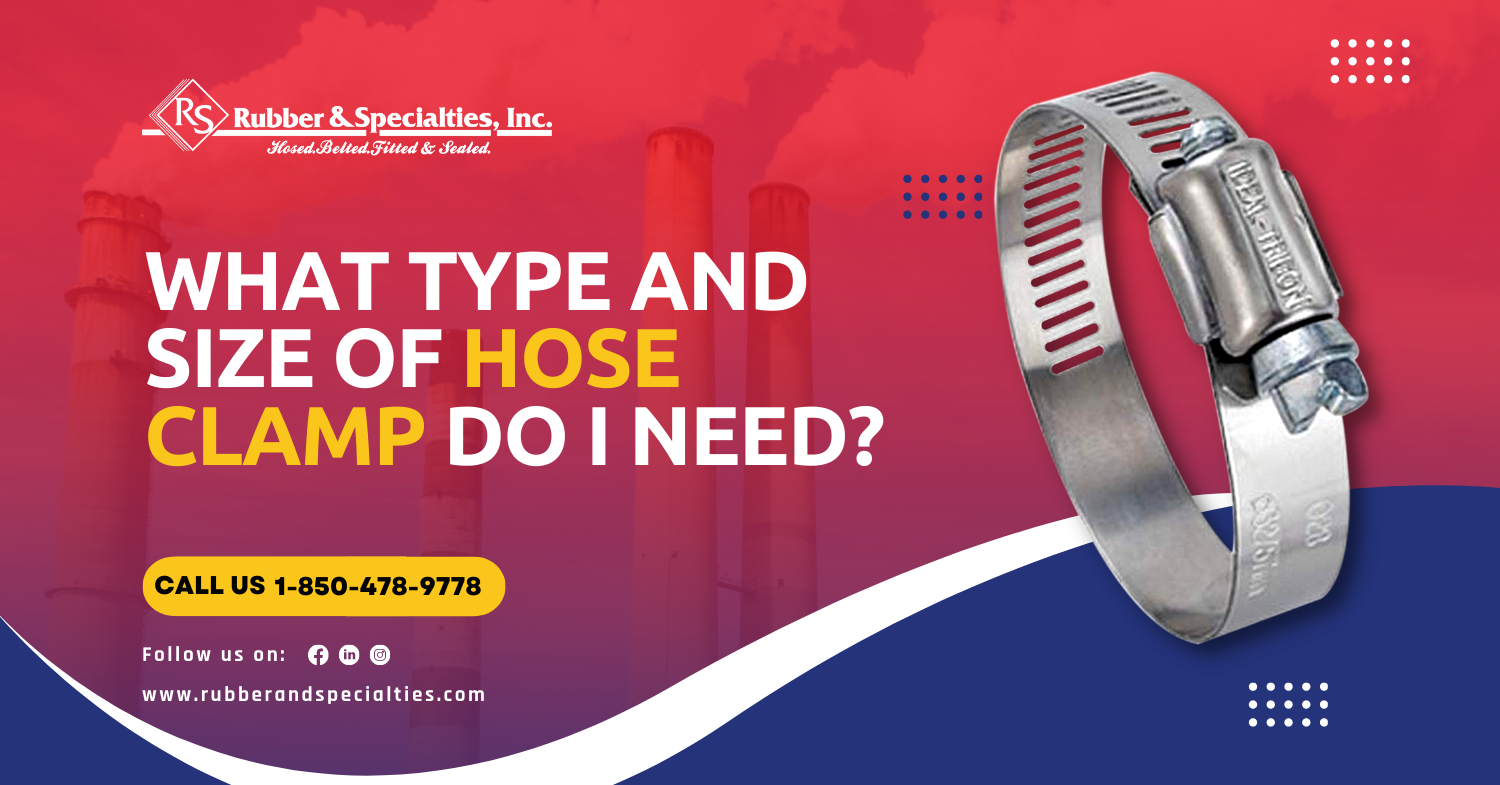
What Type and Size of Hose Clamp Do I Need?
Hose clamps are designed to secure the hose to the hydraulic fitting. It stabilizes the connection, which is why finding the correct size is essential. But before sizing a hose clamp, you need to ensure there will not be leakage or excessive pressure.
Hose clamps are meant to attach a hose to a fitting or nipple. A proper and secure fit helps ensure that the liquids needed to assist in functionality can get from point A to point B without spilling or leaking.
There are several types of hose clamps to consider, which include the following:
Worm Drive Hydraulic Hose Clamps
These clamps are the most common, simple, and quick to fit. They require less space and have a more comprehensive adjustment range to fit multiple hose sizes. While there is less metal fatigue, they are used for low-pressure applications. Worm-drive hydraulic hose clamps can be seen in automotive, agriculture, and marine applications.
The downfall to these clamps would be not having the proper clamp size for the hose. If the clamp happens to be too large, a large band protrusion could result in a potential safety hazard. On the other hand, if the clamp is tightened too far down to accommodate variation in hose size resulting in a “D” shaped clamp, your result could be a leak.
T-Bolt Hydraulic Hose Clamps
These clamps are used in applications that require high-pressure gradients, such as industrial machinery, heavy trucks, off-roading equipment, and agricultural irrigation systems. They are designed to provide a dependable solution for large-diameter applications where high vibration occurs. T bolt clamps will not easily pop off like the worm drive and its smooth inner surface helps to lessen hose damage. Additionally, they provide a more exact fit to assist with form and function and a more evenly distributed pressure, helping to give a more reliable seal. T-bolt hydraulic hose clamps are made of high-quality stainless steel and are built to withstand harsh environments.
High Torque Hydraulic Hose Clamps
These clamps provide an unmatched level of quality, strength, and performance. They are known as heavy-duty worm drive clamps. They have a smooth inner surface, which assists in lessening hose damage. Additionally, they are quick to fit, reusable, easy to re-tighten after expansions caused by temperature fluctuations, require less space, and allow more than four times the amount of torque compared to a standard clamp. High torque hose clamps can be found in automotive, marine, and agriculture applications.
Constant Tension Hydraulic Hose Clamps and Spring Clamps
When using hot fluids, the expansion and contraction of products should be a concern. During these times, the nipples and hoses will change in size. Spring clamps have constant band tension without needing adjustments, while constant tension hose clamps have Belleville washers that will compress and act like a spring because of tension. You will see these clamps in cooling systems because of their ability to change. They expand and contract independently during temperature changes to prevent cold flow leakage. Their mechanical re-tensioning properties are seen in high-performance situations, such as commercial and passenger vehicles.
Now that you know the different types of hose clamps, you can measure for size. But it’s important to note that the hose clamp size refers to the clamping diameter range. It’s the minimum and maximum usable outside diameter. Therefore, there are two things you must know, which include:
- The outside diameter of the hose. You will be able to find the accurate measurement by assembling the hose on the fitting.
- The measurement of the outside diameter of the hose and fitting found using a caliper.
SOURCE:
https://blog.brennaninc.com/what-type-and-size-of-hose-clamp-do-i-need

